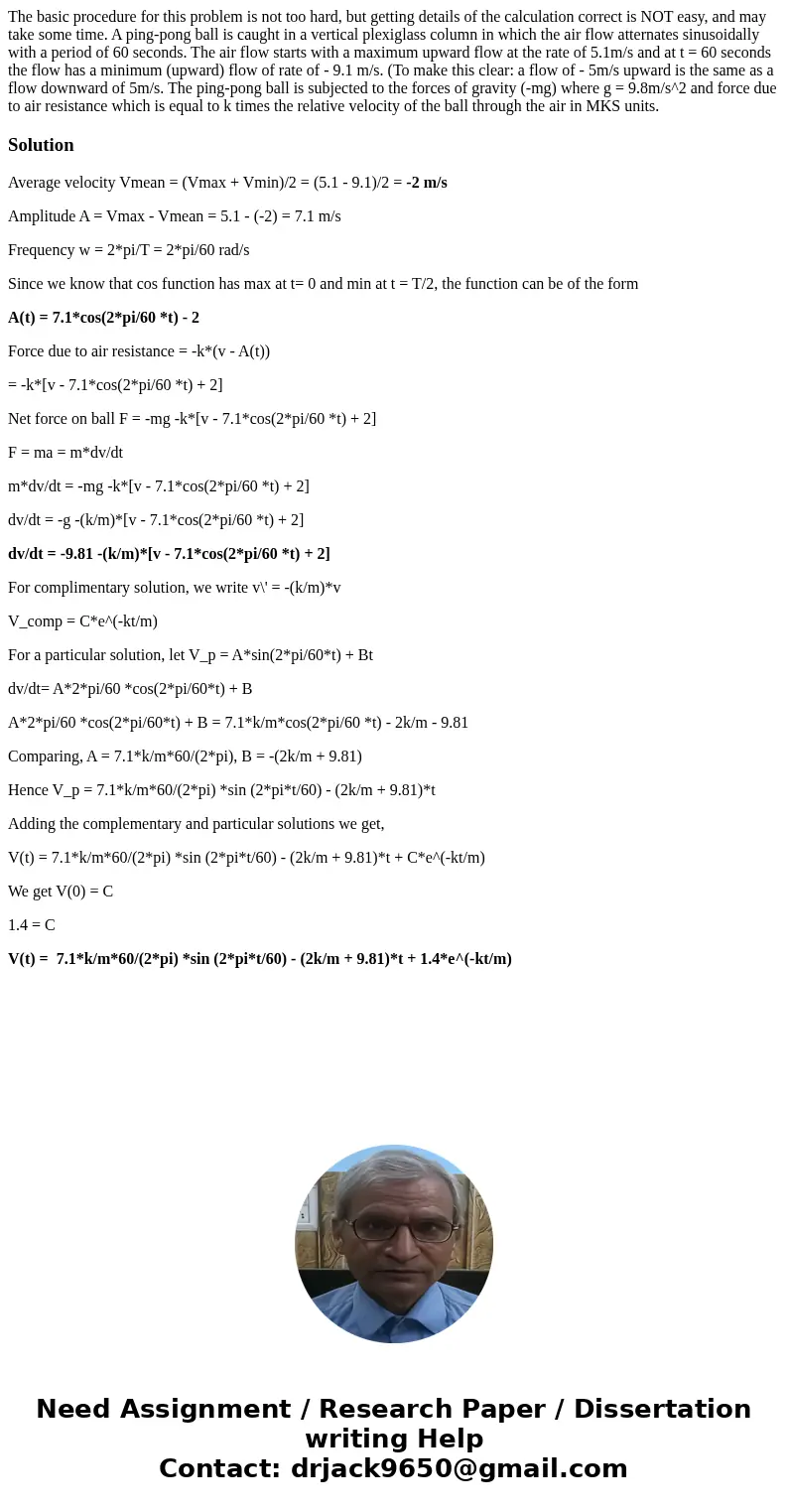The basic procedure for this problem is not too hard but get
Solution
Average velocity Vmean = (Vmax + Vmin)/2 = (5.1 - 9.1)/2 = -2 m/s
Amplitude A = Vmax - Vmean = 5.1 - (-2) = 7.1 m/s
Frequency w = 2*pi/T = 2*pi/60 rad/s
Since we know that cos function has max at t= 0 and min at t = T/2, the function can be of the form
A(t) = 7.1*cos(2*pi/60 *t) - 2
Force due to air resistance = -k*(v - A(t))
= -k*[v - 7.1*cos(2*pi/60 *t) + 2]
Net force on ball F = -mg -k*[v - 7.1*cos(2*pi/60 *t) + 2]
F = ma = m*dv/dt
m*dv/dt = -mg -k*[v - 7.1*cos(2*pi/60 *t) + 2]
dv/dt = -g -(k/m)*[v - 7.1*cos(2*pi/60 *t) + 2]
dv/dt = -9.81 -(k/m)*[v - 7.1*cos(2*pi/60 *t) + 2]
For complimentary solution, we write v\' = -(k/m)*v
V_comp = C*e^(-kt/m)
For a particular solution, let V_p = A*sin(2*pi/60*t) + Bt
dv/dt= A*2*pi/60 *cos(2*pi/60*t) + B
A*2*pi/60 *cos(2*pi/60*t) + B = 7.1*k/m*cos(2*pi/60 *t) - 2k/m - 9.81
Comparing, A = 7.1*k/m*60/(2*pi), B = -(2k/m + 9.81)
Hence V_p = 7.1*k/m*60/(2*pi) *sin (2*pi*t/60) - (2k/m + 9.81)*t
Adding the complementary and particular solutions we get,
V(t) = 7.1*k/m*60/(2*pi) *sin (2*pi*t/60) - (2k/m + 9.81)*t + C*e^(-kt/m)
We get V(0) = C
1.4 = C
V(t) = 7.1*k/m*60/(2*pi) *sin (2*pi*t/60) - (2k/m + 9.81)*t + 1.4*e^(-kt/m)

 Homework Sourse
Homework Sourse